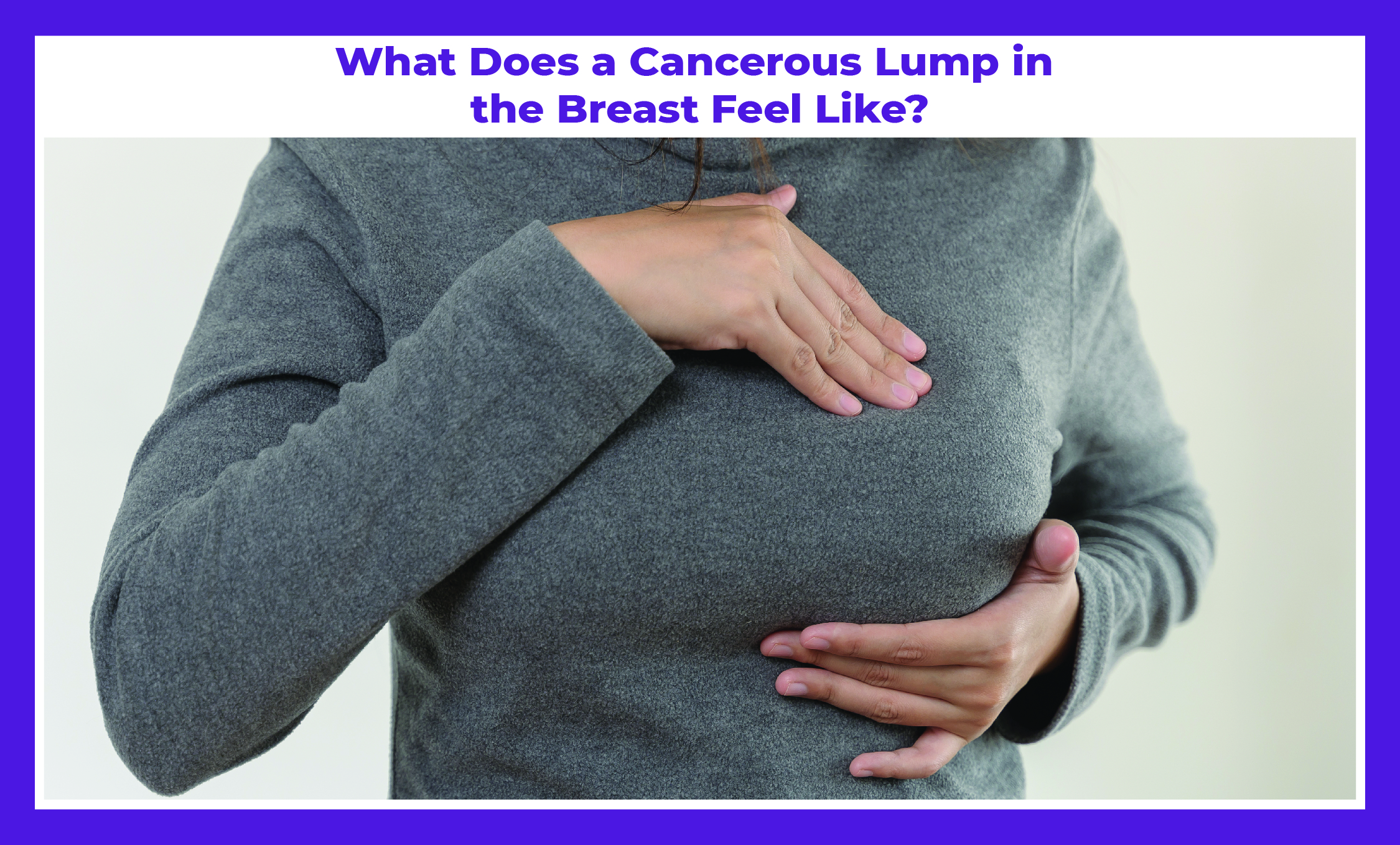How to Identify a Cancerous Lump in Your Breast?
- Blog
- What Does a Cancerous Breast Lump Feel Like?
Finding a lump in your breast can be worrying. For many the immediate question is – could it be cancer? While most breast lumps turn out to be harmless, it’s important to know what a cancerous breast lump feels like, and how it differs from other common, non-cancerous breast changes.
Not all Breast Lumps are Cancer
Before diving into the signs of a cancerous lump, it’s reassuring to know that most breast lumps are benign (non-cancerous). Conditions such as fibroadenomas, cysts, and fibrocystic changes are common, especially among younger women or those experiencing hormonal fluctuations.
That said, new lump or change in your breast should be taken seriously- especially if it doesn’t go away over time.

What Does a Cancerous Lump Typically Feel Like?
If you're trying to understand the difference between a harmless lump and one that may be cancerous, the following features can help:
- Hard and Firm:
Cancerous lumps are usually hard in texture. They may feel like a solid, stone-like mass within the breast tissue. Unlike softer, fatty lumps, they tend to be denser and more rigid. - Irregular in Shape:
Unlike benign lumps are often smooth and round, a cancerous lump is often irregular- with uneven edges or a slightly jagged feel. - Fixed in Place:
A key sign of a potentially cancerous lump is that it may feel anchored or fixed to the surrounding tissue. It doesn't roll or move easily under the skin when pressed. - Painless:
Many people assume that cancerous lumps must be painful- but this a myth. Most early-stage breast cancer do not cause pain. The lump can be entirely painless and still be cancer. - Persistent and Growing:
Benign lumps often come and go with the menstrual cycle. A cancerous lump usually does not shrink or disappear- and may slowly increase in size over time.
Other Changes to Watch For:
In addition to a lump, other signs of breast cancer may include:
- Skin changes, such as dimpling or puckering
- Nipple inversion, pulling inward instead of pointing outward
- Unusual nipple discharge, especially if bloody or clear and not related to breastfeeding
- Redness or thickening of the skin
- Swelling near the underarm (which could indicate swollen lymph nodes)
These changes may not be painful but should always prompt a consultation with a qualified breast cancer doctor in Gurugram like Dr. Deepak jha.
Why Early Detection is so Important?
Early detection of breast cancer dramatically improves treatment outcomes. When found in its early stages, breast cancer is highly treatable, often requiring less aggressive therapies.
Dr. Deepak Jha, a highly experienced breast cancer surgeon in Delhi, emphasises that noticing the feel of a lump early — and not ignoring it — can make all the difference.
How to Perform a Self-Exam?
While not a replacement for medical screenings, breast self-exams help you become familiar with your own breast tissue. This makes it easier to notice when something feels different.
- Step 1: Look in the mirror: check for changes in breast size, shape, skin texture, or nipple position.
- Step 2: Feel while lying down: with a flat hand and gentle pressure, move in circular motions around the entire breast, covering all areas from the collarbone to below the breast, and from the armpit to the sternum.
- Step 3: Repeat in the Shower: soap and water can make it easier to glide your fingers and feel any hidden lumps. Perform this check once a month, ideally a few days after your menstrual cycle ends.
What Should You Do If You Find a Lump?
Finding a lump is a reason to schedule a visit with your doctor — not to panic.
Here’s what may happen next:
- Clinical Breast Exam: A doctor will physically examine the lump, noting its size, shape, and mobility.
- Imaging: Tests like a mammogram, ultrasound, or sometimes an MRI are used to assess the lump further.
- Biopsy: If needed, a small sample of tissue is taken (called a biopsy) to determine if the cells are benign or cancerous.
Common Benign Breast Lumps (That May Feel Similar):
Even though certain features point toward cancer, many non-cancerous conditions can feel similar. These include:
- Fibroadenomas: Common in younger women, usually soft, smooth, and movable.
- Cysts: Fluid-filled sacs that can feel like round, tender lumps.
- Lipomas: Soft, fatty lumps under the skin, usually painless.
- Infections (Mastitis): Especially in breastfeeding women, these can cause painful, red, swollen lumps.
Since they can mimic each other, only a proper diagnosis can determine what you're dealing with.
If a lump turns out to be cancerous, early referral to a breast cancer specialist is crucial. Treatment may involve surgery, radiation, chemotherapy, hormonal therapy, or a combination — based on the type and stage of cancer.
Expert like Dr. Deepak Jha, regarded as one of the best breast cancer specialists in Gurugram, offer a multi-disciplinary and patient-centred approach. From diagnosis to treatment, having the guidance of a skilled professional ensures timely care and improved quality of life. It’s important to remember: a lump does not have to be painful to be serious. One of the most dangerous myths about breast cancer is believing that if it doesn’t hurt, it can be ignored. Even if you're unsure, it’s better to have it checked than to wait and worry. Scheduling a consultation with a reputed breast cancer doctor in Gurugram or seeking help from the best breast cancer surgeon in Delhi like Dr. Deepak Jha can provide clarity and peace of mind.
Subscribe Newsletter
Get all the information, latest updates, and articles delivered directly in your inbox
